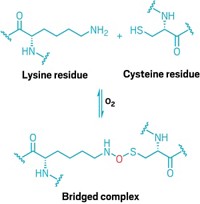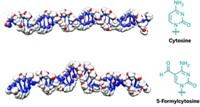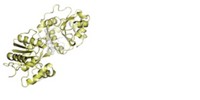Advertisement
Grab your lab coat. Let's get started
Welcome!
Welcome!
Create an account below to get 6 C&EN articles per month, receive newsletters and more - all free.
It seems this is your first time logging in online. Please enter the following information to continue.
As an ACS member you automatically get access to this site. All we need is few more details to create your reading experience.
Not you? Sign in with a different account.
Not you? Sign in with a different account.
ERROR 1
ERROR 1
ERROR 2
ERROR 2
ERROR 2
ERROR 2
ERROR 2
Password and Confirm password must match.
If you have an ACS member number, please enter it here so we can link this account to your membership. (optional)
ERROR 2
ACS values your privacy. By submitting your information, you are gaining access to C&EN and subscribing to our weekly newsletter. We use the information you provide to make your reading experience better, and we will never sell your data to third party members.
Physical Chemistry
A new twist revealed for ribozyme catalysis
Computational simulations suggest mechanism by which twister ribozymes cleave themselves
by Jyllian Kemsley
March 21, 2016
| A version of this story appeared in
Volume 94, Issue 12
RNAs called ribozymes can catalyze chemical reactions and often play a role in regulating gene expression. Twister ribozymes, which get their name because their overall structure resembles an ancient Egyptian hieroglyph representing twisted flax, are widespread in bacteria and eukaryotes and cut their own phosphodiester backbone. They may accomplish that cleavage through a novel acid catalysis mechanism, according to computational simulations presented at the meeting by Darrin M. York of Rutgers University. Twister ribozymes crystallize in an inactive conformation, which has made it difficult to determine how they self-cleave between adjacent uracil and adenine residues. York and graduate student Colin S. Gaines simulated both the crystalline and solution forms of a twister ribozyme (J. Am. Chem. Soc. 2016, DOI: 10.1021/jacs.5b12061). The chemists found that in solution the uracil can adopt an active conformation in which it stacks with a nearby guanine. The guanine N1 may then hydrogen-bond to the uracil 2’-OH, promoting it as a nucleophile to attack a neighboring phosphate. Meanwhile, the adenine N3 is protonated and can hydrogen-bond to its own 5’-O, promoting it as a leaving group. Although the N1 of adenine residues has been implicated in catalysis by other ribozymes, such a role has not previously been suggested for N3.





Join the conversation
Contact the reporter
Submit a Letter to the Editor for publication
Engage with us on Twitter